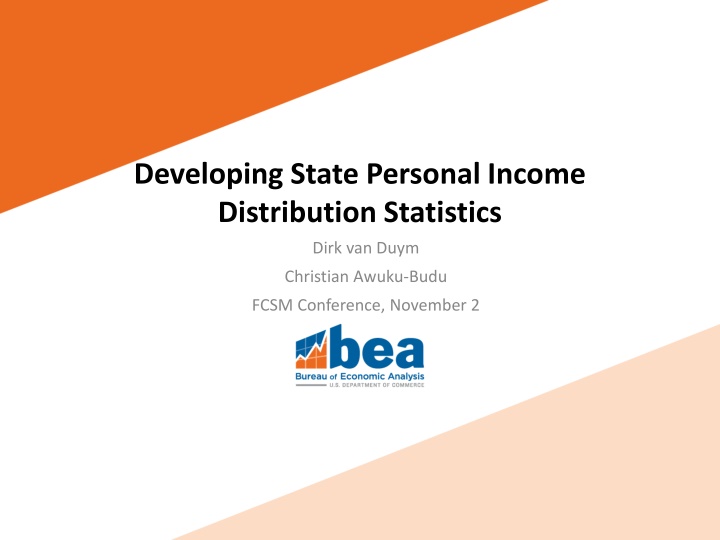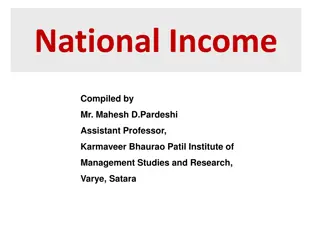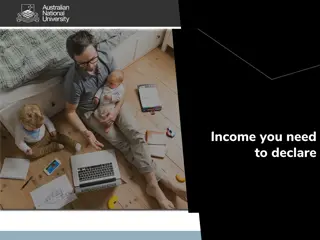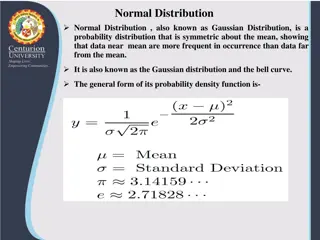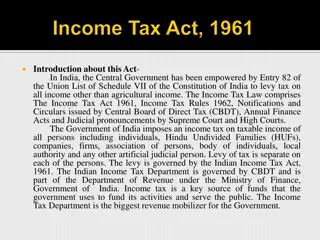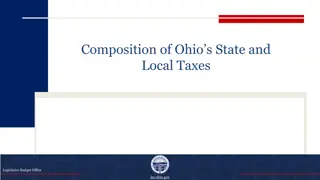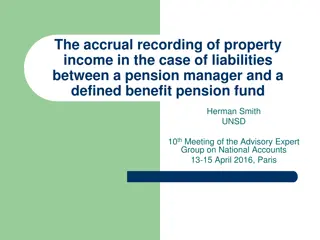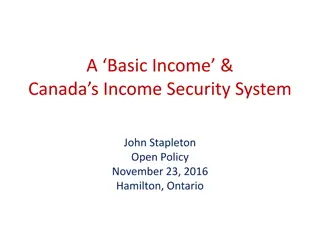Developing State Personal Income Distribution Statistics
This project aims to create a distributional account for State Personal Income, allowing for the analysis of inequality by state and over time. Using various data sources such as BEA aggregates and IRS statistics, the distributional model provides insights into state-level income inequality. Census data, think tanks, and other estimates are compared to the model, showcasing different approaches to measuring state inequality. The project utilizes detailed annual state personal income components and CPS ASEC microdata for household allocation. By benchmarking to NIPA and state data constraints, this initiative contributes to the BEA's Beyond GDP initiative.
Download Presentation

Please find below an Image/Link to download the presentation.
The content on the website is provided AS IS for your information and personal use only. It may not be sold, licensed, or shared on other websites without obtaining consent from the author.If you encounter any issues during the download, it is possible that the publisher has removed the file from their server.
You are allowed to download the files provided on this website for personal or commercial use, subject to the condition that they are used lawfully. All files are the property of their respective owners.
The content on the website is provided AS IS for your information and personal use only. It may not be sold, licensed, or shared on other websites without obtaining consent from the author.
E N D
Presentation Transcript
Developing State Personal Income Distribution Statistics Dirk van Duym Christian Awuku-Budu FCSM Conference, November 2
Introduction Goal: create a distributional account for State Personal Income o Allows for analysis of inequality by state and over time o Benchmarked to BEA SPI aggregates o Contributes to BEA s Beyond GDP initiative Builds off BEA work distributing national personal income (Fixler et al, 2020), adapting to state data constraints 2 11/2/2021
Other Estimates of State Inequality Census provides official state median household money income and Gini coefficients by state o Directly from American Community Survey and/or Current Population Survey o Not benchmarked to NIPA or State Personal Income, or tax data Economic Policy Institute (think tank) has top 1% state and county estimates up to 2015, based on IRS SOI data and ACS Forthcoming research from Census using linked survey and tax microdata 3 11/2/2021
Source Data Base datasets o State Personal Income accounts o CPS Annual Social and Economic Supplement (ASEC) microdata Other data sources o IRS Statistics of Income o Medical Expenditure Panel Survey o Survey of Consumer Finances o American Community Survey o Center for Medicare and Medicaid Services o Congressional Budget Office 4 11/2/2021
Base Dataset 1: SPI Accounts We start by selecting 75 detailed annual state personal income components, to be allocated to households These population aggregates are BEA s bread & butter: measured using a variety of source data, often in partnerships with IRS, BLS Components measured on place-of-work basis are transformed to place-of-residence basis, to be consistent with survey data used in next steps 5 11/2/2021
Base Dataset 2: CPS ASEC microdata Base dataset for allocation to state households is pooled CPS ASEC microdata, from three previous years CPS is only source that has enough variety of income types Following Census guidance on using multiple years for state estimates o Similar structure to ACS 3 or 5-year files used for smaller geographies 6 11/2/2021
CPS Adjustments CPS is adjusted for under/misreporting, to improve estimates of the top of the distribution o Using state IRS Statistics of Income data on wages, interest, dividends, business income (sole proprietor & partnership) Other data sources used to supplement, or fill out CPS o CPS alone is not suitable to distribute some income types to households: medical income components, imputed interest/rent, etc. o Bring in: CMS, MEPS, SCF, BEA s recent housing work based on ACS, others 7 11/2/2021
Allocating, and Generating Estimates Each detailed, place-of-residence SPI component is allocated to state households using adjusted CPS We now have microdata that adds up to State Personal Income Household size-adjusted income is used to define the ranking of households o o Inequality measures can now be produced Median, Gini, quintile shares of State PI Quintile shares of sub-aggregates, consistent with existing BEA Regional publication tables o o 8 11/2/2021
Results New results for 2009-2018 o Many statistics to look at, just a selection today (more in paper) o Focus on Gini, median income, top quintile borders Quintiles borders are defined at the state level o Comparison to Census state money income estimates 9 11/2/2021
Gini Coefficients, 2018 10 11/2/2021
Our estimates vs. Census state estimates from ACS 11 Note: results not equivalized for household size, for comparability to Census 11/2/2021
Our estimates vs. Census state estimates from ACS 12 Note: results not equivalized for household size, for comparability to Census 11/2/2021
80th Percentile of Equivalized SPI, 2018 13 11/2/2021
20th Percentile of Equivalized SPI, 2018 14 11/2/2021
20th Percentile of RPP-Adjusted Equiv. SPI, 2018 15 11/2/2021
Mean vs. Median Growth 16 11/2/2021
Future Research State disposable personal income o Involves distributing taxes o Allows for analysis post-tax and post-transfer Moving towards official BEA statistics o Your feedback needed! 17 11/2/2021
